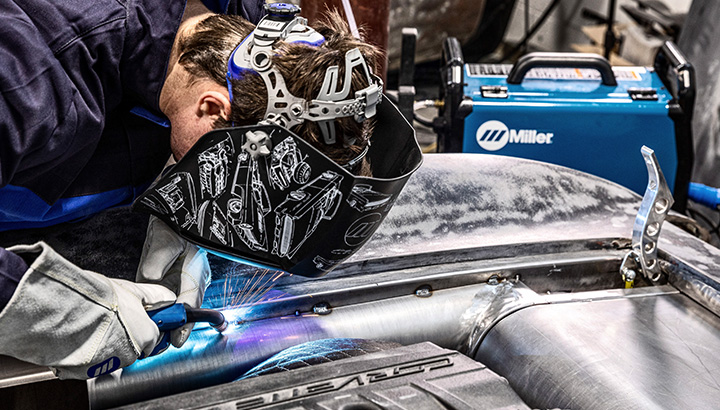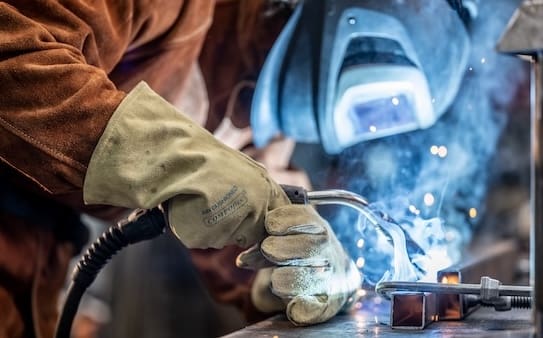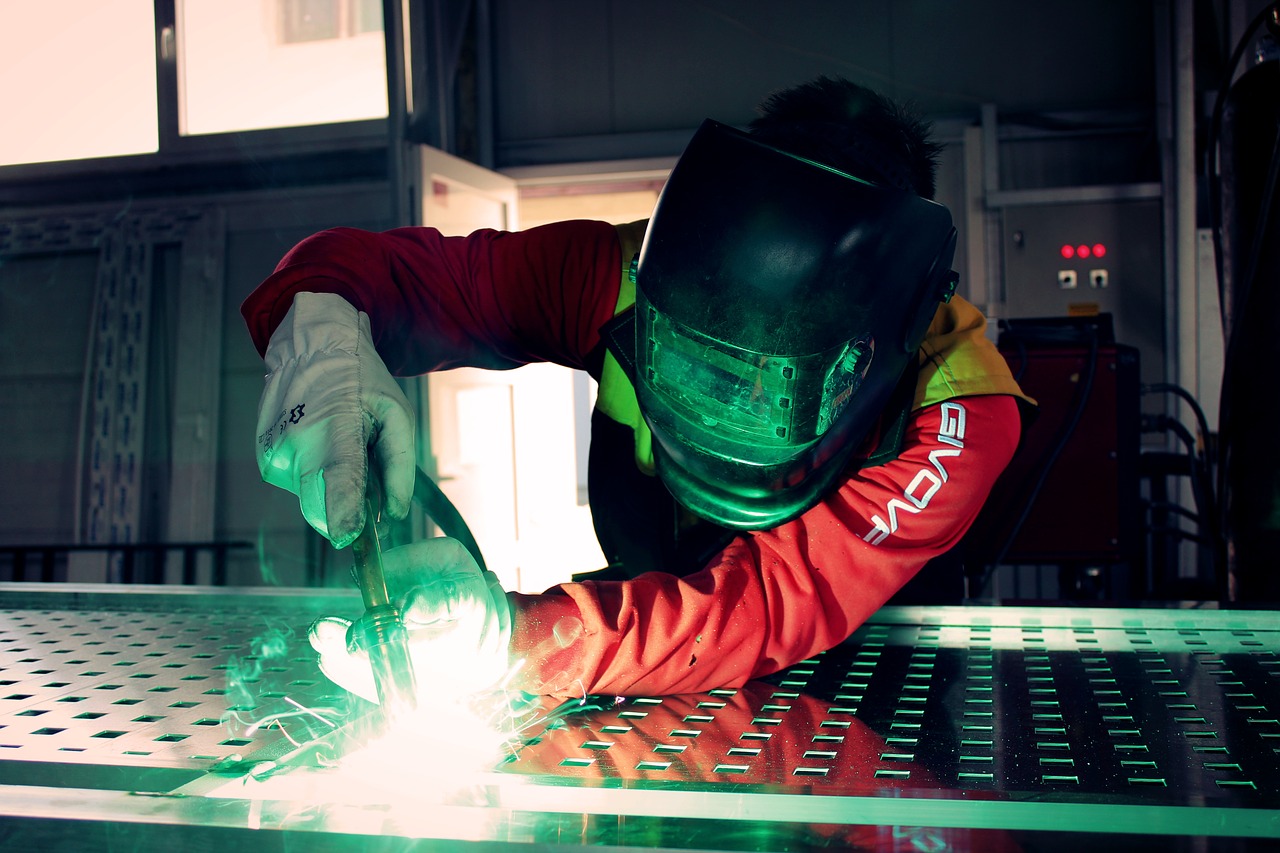Have you seen signs of incomplete fusion? Montana Mobile Welding and Repair explains how to detect them
Typical Welding Fixing Issues and How to Address Them Properly
Welding repair services frequently encounter an array of issues that can threaten the stability of the end product. Common troubles include inadequate penetration, porosity, and imbalance, to name a few. Each problem presents one-of-a-kind challenges that require particular strategies for resolution. Recognizing these concerns is crucial for welders aiming to improve their end results and skills. This discussion will explore these typical welding repair problems and efficient techniques to address them.
Poor Penetration
Insufficient penetration happens when the weld steel stops working to completely fuse with the base material, causing weak joints and prospective architectural failings. This concern commonly comes from not enough heat input, inaccurate electrode angle, or improper welding rate. Welders might experience insufficient penetration as a result of a miscalculation of the required specifications for a details product thickness or kind. In addition, contamination on the base material's surface area can hinder efficient bonding, intensifying the problem. To resolve poor infiltration, welders ought to assure suitable setups on their devices and keep a tidy work surface area. Routine assessment of welds is recommended to recognize any kind of deficiencies early, permitting timely improvements and the avoidance of compromised structural integrity in welded assemblies.
Porosity
Porosity is an usual issue in bonded joints that shows up as small gas bubbles trapped within the weld metal. This flaw can endanger the integrity of the weld, causing decreased stamina and potential failure under anxiety. Belgrade. Porosity typically develops from contamination, moisture, or improper welding strategies, which enable gases to run away into the molten weld pool. To deal with porosity, welders need to ensure appropriate surface preparation, maintain a tidy functioning environment, and utilize ideal welding parameters. In addition, selecting the best filler product and protecting gas can mitigate gas entrapment. Normal examination and testing of welds can assist recognize porosity early, guaranteeing prompt restorative activities are taken, thereby preserving the quality and dependability of the welded structure
Misalignment
Imbalance in welding can occur from various elements, including inappropriate arrangement and thermal development. Comprehending the source is necessary for efficient resolution. A number of adjustment techniques are readily available to straighten elements and assure architectural integrity.
Root causes of Misalignment
Welding misalignment usually stems from a range of underlying issues that can compromise structural integrity. One key cause is improper fit-up of elements prior to welding, which can bring about voids and unequal surface areas. Variations in thermal expansion during the welding procedure can additionally lead to distortion, particularly if the materials being joined have different coefficients of growth. Furthermore, poor fixturing and securing might fall short to hold elements securely in area, bring about movement during welding. Poorly maintained tools, consisting of welding machines and tools, may introduce disparities in the weld grain, more adding to imbalance. Operator error, stemming from not enough training or experience, can likewise play a significant function in producing misaligned welds.

Improvement Strategies Readily Available
Addressing imbalance successfully needs a mix of restorative methods tailored to the specific issues at hand. One common approach is using fixtures or jigs to hold components in the correct placement during welding, making certain consistent positioning. Additionally, pre-heating the materials can help in reducing distortion and improve fit-up. For significant misalignment, mechanical adjustment strategies, such as making use of hydraulic jacks or clamps, can be utilized to correct the setting prior to welding. Post-weld warmth treatment may also be essential to relieve tensions brought on by misalignment. Cautious examination and change during the configuration phase can stop imbalance issues from coming to be substantial issues, promoting a smoother welding procedure and boosting general structural honesty.
Distortion
Distortion is a typical difficulty in welding that can arise from various aspects, including unequal heating & cooling. Comprehending the sources of distortion is essential for applying efficient prevention techniques. Addressing this concern not just enhances architectural integrity yet also enhances the overall top quality of the weld.
Sources of Distortion
When subjected to the extreme warmth of welding, materials often undertake changes that can bring about distortion. This phenomenon largely arises from thermal development and contraction throughout the welding process. As the weld area warms up, the product broadens; upon air conditioning, it gets, which can develop inner stresses. Furthermore, unequal home heating across a workpiece can exacerbate these tensions, resulting in warping or flexing. The kind of material also plays a considerable function; steels with differing thermal conductivity and coefficients of development might react differently, resulting in unforeseeable distortions. Furthermore, poor joint layout and poor fixturing can add to misalignment during welding, increasing the possibility of distortion. Understanding these reasons is necessary for efficient welding repair service and prevention approaches.
Prevention Techniques
Reliable avoidance methods for distortion during welding concentrate on managing warm input and guaranteeing proper joint design. Keeping a constant warmth input helps to lessen thermal expansion and tightening, which can lead to distortion. Using methods such as preheating the workpiece can likewise minimize the temperature level gradient, advertising uniform home heating. In addition, selecting proper joint layouts, such as T-joints or lap joints, can boost stability and reduce stress focus. Applying correct fixturing to secure the work surfaces in location better help in maintaining alignment throughout the welding process. Staggered welding series can distribute warm much more equally, preventing localized distortion. By applying these methods, welders can substantially lower the likelihood of distortion and boost the overall top quality of their welds.
Breaking
Splitting is go to my site a common issue encountered in welding fixings, usually arising from numerous variables such as inappropriate cooling rates, material option, or inadequate joint prep work. The occurrence of cracks can substantially jeopardize the stability of the weld, causing possible failures throughout operation. To address this issue, welders have to initially assess the origin, making certain that materials are compatible and appropriately picked for the specific application. Additionally, regulating the air conditioning rate during the welding process is important; rapid air conditioning can induce stress and anxiety and lead to splitting. Correct joint style and prep work additionally add to minimizing the threat. Applying home these techniques can boost weld top quality and resilience, eventually reducing the possibility of cracking in finished weldments.

Insufficient Combination
A significant problem in welding fixings is insufficient blend, which happens when the weld steel does not sufficiently bond with the base material or previous weld passes - Montana Mobile Welding and Repair. This problem can lead to weaknesses in the joint, potentially jeopardizing the integrity of the welded structure. Variables adding to incomplete blend include insufficient warmth input, incorrect welding strategy, and contamination of the surfaces being joined. To resolve this issue effectively, welders ought to guarantee proper pre-weld cleansing and surface preparation, along with readjust their welding specifications to achieve adequate penetration and blend. Routine assessment throughout the welding procedure can also help recognize insufficient fusion early, enabling timely corrective procedures to boost the general quality of the weld
Overheating
While welding repair work can improve architectural stability, overheating provides a considerable challenge that can cause product destruction. Extreme warmth during welding can modify the mechanical buildings of steels, leading to minimized stamina, increased brittleness, and warping. This sensation is particularly crucial in high-stress applications where architectural reliability is critical. Determining overheating can include visual assessments for discoloration or distortion, as well as keeping an eye on temperature level throughout the welding process. To mitigate the threats linked with getting too hot, welders ought to utilize ideal strategies, such as regulating heat input, adjusting travel speed, and using ideal filler products. In addition, implementing pre- and post-weld heat therapies can assist recover material residential properties and boost the total quality of the repair service, ensuring lasting efficiency and safety and security.
Regularly Asked Inquiries
What Are the Common Indicators of a Welding Problem?

Exactly How Can I Examine My Welds for High quality?
To test welds for top quality, one can make use of aesthetic evaluations, ultrasonic testing, and radiographic approaches. Each method ensures architectural stability, determines issues, and validates adherence to defined requirements, inevitably enhancing the integrity of the welded joints.
What Safety and security Precautions Should I Take While Welding?
When welding, one great site must prioritize security by using ideal individual safety equipment, making certain correct ventilation, protecting combustible materials away, preserving a tidy workspace, and being conscious of environments to stop mishaps and injuries.
Can I Fix a Weld Without Remodeling the Entire Joint?
Fixing a weld without renovating the entire joint is possible, depending upon the damage (Welding). Techniques such as grinding, adding filler material, or using a welding process can successfully address specific imperfections while preserving the surrounding framework
What Devices Are Important for Reliable Welding Repair Works?
Vital tools for efficient welding repair services consist of a welding machine, cable brush, grinder, safety gear, clamps, and filler products. Each device plays an essential role in making sure high quality and safety during the fixing process. Porosity typically develops from contamination, wetness, or incorrect welding techniques, which enable gases to escape into the molten weld swimming pool. Inadequately conserved equipment, consisting of welding machines and tools, may present disparities in the weld bead, additional contributing to imbalance. When subjected to the intense heat of welding, materials often go through modifications that can lead to distortion. Cracking is a common concern run into in welding repair services, often resulting from different factors such as inappropriate cooling prices, material option, or insufficient joint prep work. A substantial concern in welding repairs is incomplete combination, which happens when the weld metal does not appropriately bond with the base material or previous weld passes.